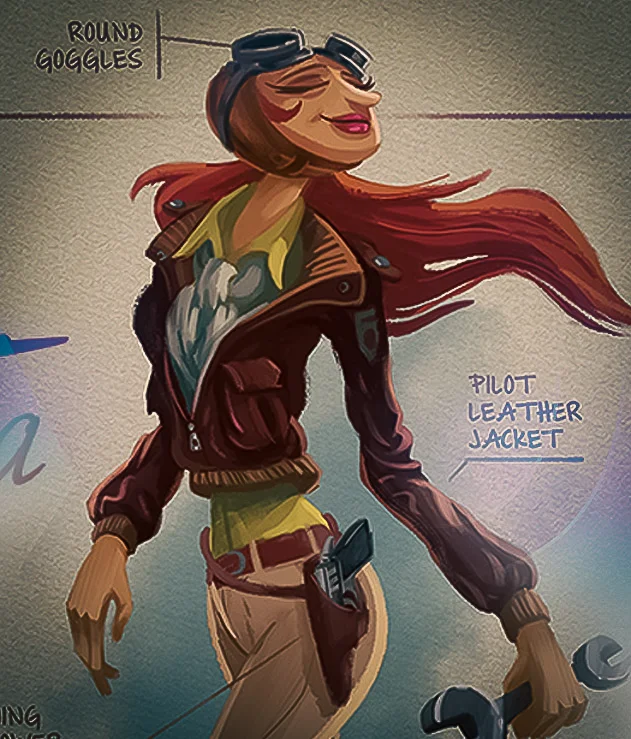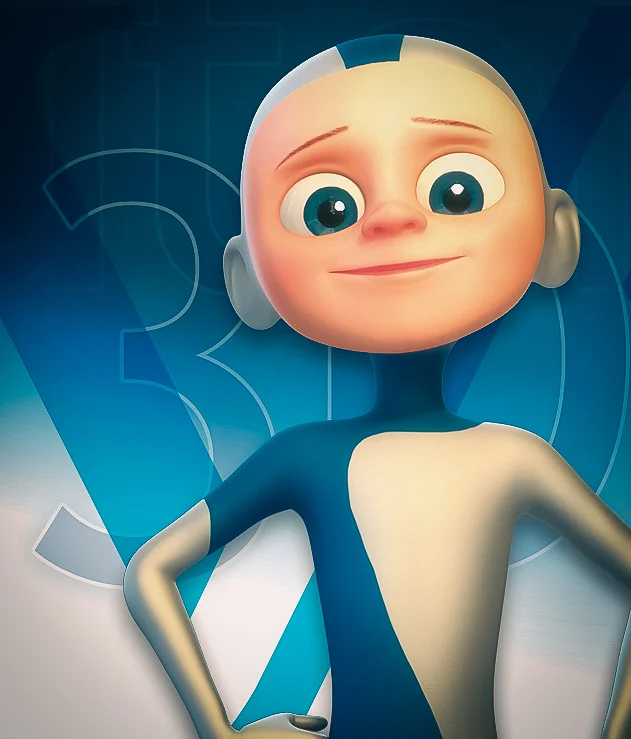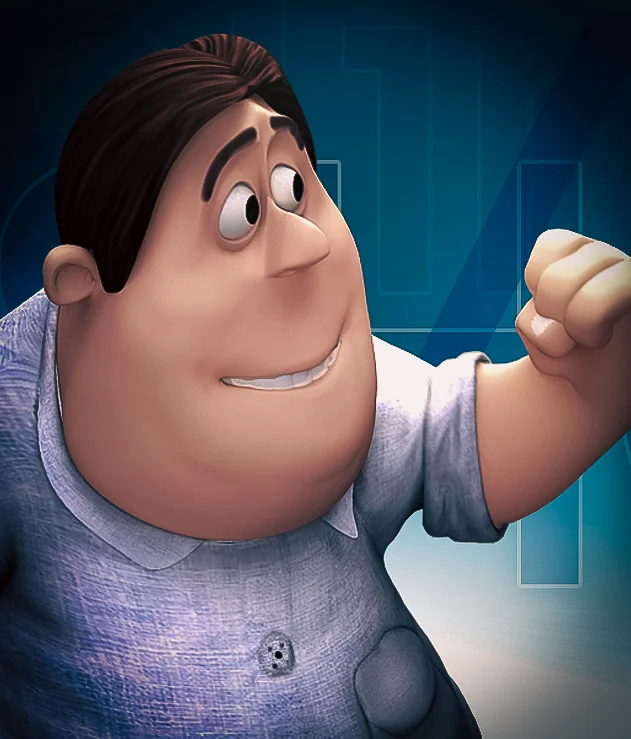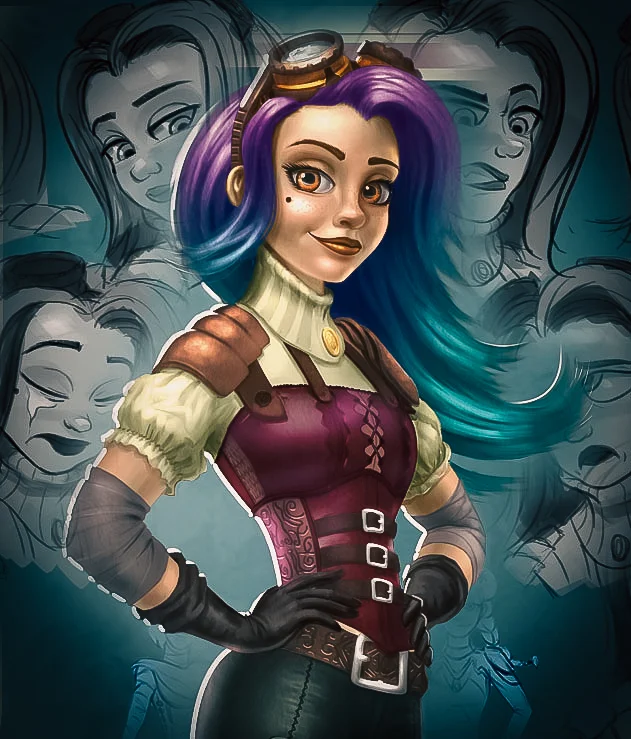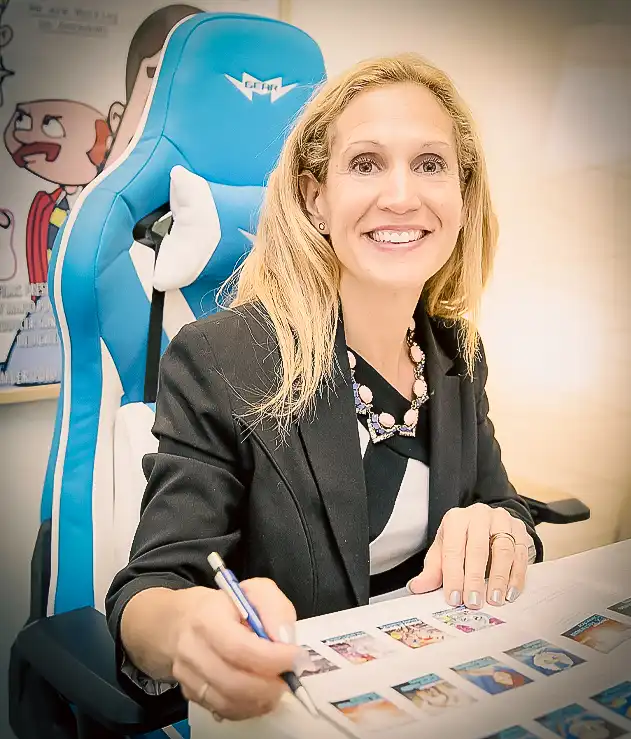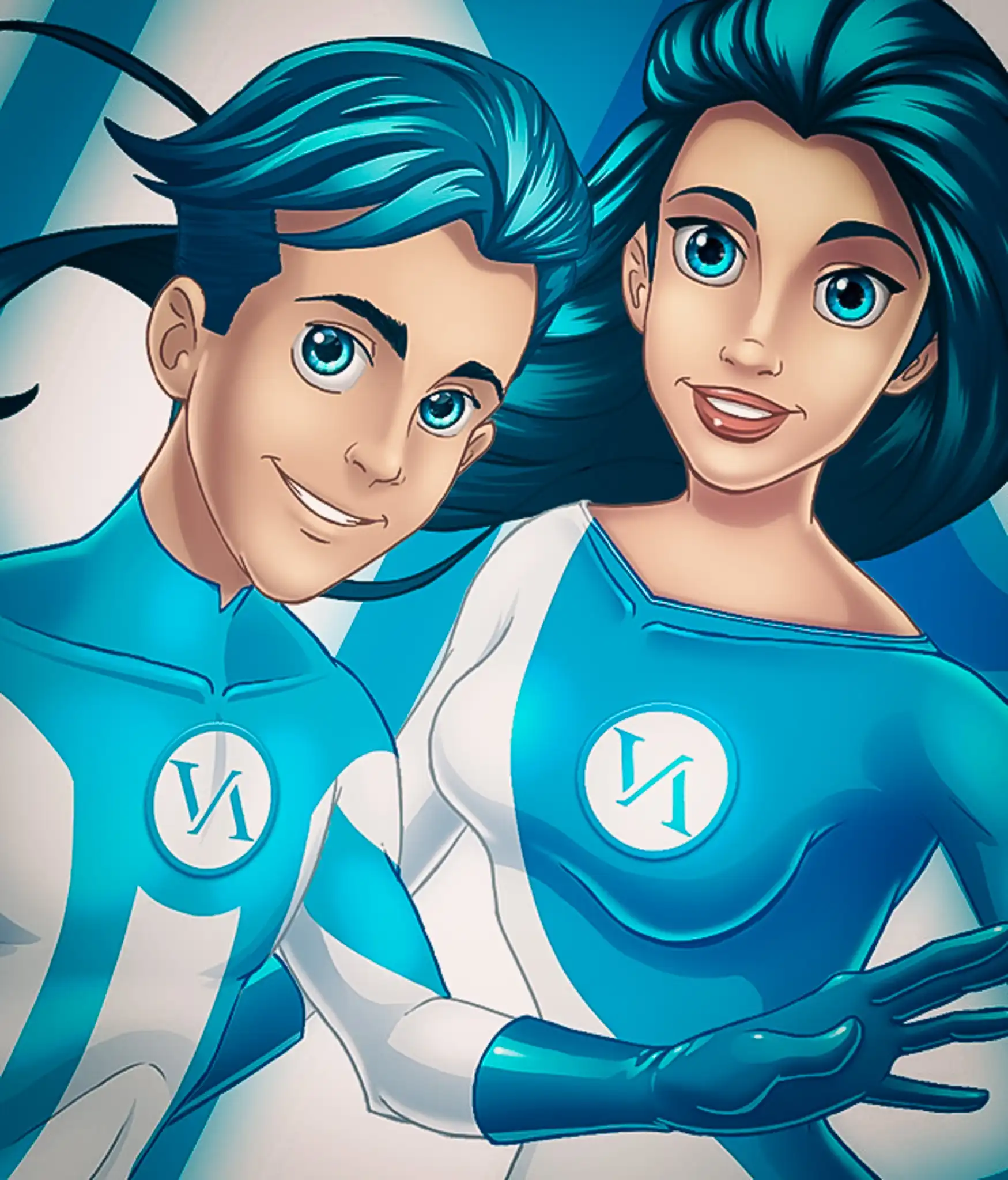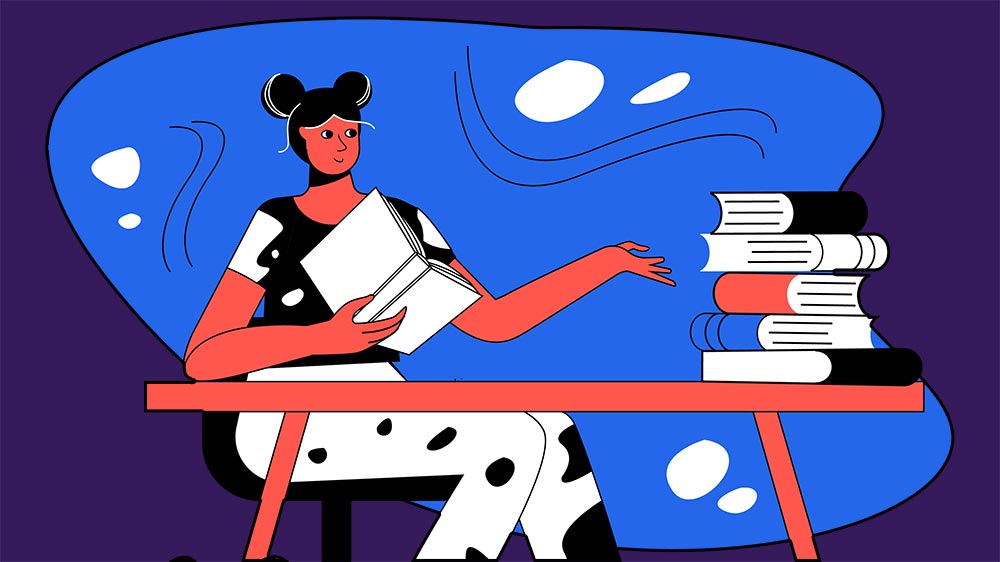 Image: IconsX (Motion Array)
Image: IconsX (Motion Array)
Author: VANAS Team
Why Everyone Should Read Comic Book Biographies
Table of Contents
- What Are Comic Book Biographies?
- The Difference Between Comic Books and Graphic Novels
- Why Biographies in Animation-Style Matter
- Examples of Amazing Comic Book Biographies
- How Comic Book Biographies Are Used in Schools
- Creating Your Own Biography Comic or Graphic Novel
- How This Helps Future Animation Artists
- Frequently Asked Questions
What Are Comic Book Biographies?
Comic book biographies are stories from real life, drawn and told in the style of comics. Unlike fiction-based superhero tales, these books focus on real people—historical or modern—and the events that shaped their lives.
From scientists and artists to politicians and activists, comic book biographies cover a wide range of real people. These stories use illustrations, word balloons, and a panel-by-panel format to bring true stories to life in a powerful, visual way.
These comics are animated in style, which makes them especially appealing to high school students, young adults, and anyone who loves visual storytelling. They combine art and facts, setting the foundation for a format similar to what animators do when planning scenes, character expressions, and storyboards.
And don’t forget: VANAS Online Animation School offers Animation, Visual Effects, and Video Game programs. To launch your career, visit https://www.vanas.ca
The Difference Between Comic Books and Graphic Novels
Before we go further, it's important to know the difference between comic books and graphic novels, especially when it comes to biographies.
Comic books:
- Usually shorter
- Often part of a series
- Come out in issues (like magazines)
- Easy to digest quickly
Graphic novels:
- Longer and more in-depth
- Usually tell the entire story in one book
- Often focus on character development
- Have a beginning, middle, and end in one volume
When a biography is told as a comic, it can be either format. Some tell a person's full life in a graphic novel. Others may be series-style, focusing on one moment in a comic book issue. Either way, both formats bring powerful life stories to a wide audience in a creative, animation-inspired form.
Why Biographies in Animation-Style Matter
Animation is all about movement, expression, and visual impact. Comic book biographies tap into the same energy. That’s why these books are so effective—they transform facts into emotion, and information into connection.
Real people become more relatable when we see how they looked, felt, and acted in the key moments of their lives. Through background art, facial expressions, and creative layout, comic book biographies use many of the same techniques you learn in animation.
Here’s what they do well:
- Show emotion through facial drawings
- Use framing and composition to guide the eye
- Include symbolic or exaggerated moments for impact
- Combine visuals and text to explain complex ideas simply
Reading a comic biography can feel like watching an animation storyboard in action. That’s why this format is a favorite of animation fans and artists.
Examples of Amazing Comic Book Biographies
There are many comic book and graphic novel biographies that stand out because they tell powerful stories and teach us about real people in a memorable way. Here are a few to check out:
March by John Lewis, Andrew Aydin, and Nate Powell
This award-winning graphic novel trilogy tells the story of civil rights leader John Lewis. It brings his personal journey—growing up in segregation, leading protest marches, and working with Dr. Martin Luther King Jr.—to life in a bold, animated style.
Brazen: Rebel Ladies Who Rocked the World by Pénélope Bagieu
In this collection, French cartoonist Pénélope Bagieu illustrates the lives of fearless women from history—from ancient Chinese warriors to modern musicians. The visual style makes these lesser-known stories come alive with humor, power, and inspiration.
The 14th Dalai Lama: A Manga Biography
Created in a manga (Japanese comic) style, this book tells the life story of the Dalai Lama. It uses dynamic, anime-style art to help readers understand the Tibetan leader’s struggles, faith, and messages of peace.
The Life of Frederick Douglass: A Graphic Narrative of a Slave’s Journey from Bondage to Freedom by David Walker and Damon Smyth
This book uses detailed, motion-filled drawings to show how Douglass escaped slavery and became one of America's strongest voices for justice and abolition. The comic format makes his strength and message feel immediate and real.
These graphic biographies not only teach history—they do it with visual storytelling tools that echo animation storyboards and scene planning. They’re proof that animation-style art can be just as educational as it is entertaining.
How Comic Book Biographies Are Used in Schools
Teachers increasingly use comic book biographies in classrooms to help students connect with history, social studies, and even science. For students who enjoy animation, visual storytelling, and comics, this format can be more engaging than a regular textbook.
Here’s why schools are embracing comic biographies:
- They help struggling readers understand complex material
- The art makes complex or emotional topics more approachable
- Students remember more when they learn through visuals
- They reach visual learners and creative thinkers
It’s also easier to connect with the journeys of real people when you can actually see them. When students read a comic panel of Malala Yousafzai standing up for girls' education, or see Frederick Douglass learning to read, it feels real and memorable.
These comics often follow techniques used by animators, such as layout composition, expression styles, consistency in features, and storytelling flow. Animation students can learn a lot by analyzing how these books tell true stories.
Creating Your Own Biography Comic or Graphic Novel
If you’re passionate about animation or storytelling, making your own biographical comic or graphic novel is a great way to develop your skills.
Start by picking the subject—a real person whose story should be told. It can be someone famous or someone in your family or local community. Then, decide what “chapter” of their life you want to show. Avoid trying to cover everything. Focusing on a key event makes for a stronger story.
Here are basic steps to follow, similar to planning an animated short:
- Research. Learn everything you can about your subject. Read books, interviews, articles—and take notes.
- Plan your scenes. Use thumbnail sketches like animation storyboards to plan your panels.
- Develop expressions and poses. Practice drawing emotions and body language to match the story tone.
- Focus on key moments. Don’t overload each page. Use strong visuals to tell the turning points clearly.
- Add text carefully. Keep dialogue and narrative short so the art stays center stage.
Creating a comic biography involves the same storytelling principles as animation. Tension, rhythm, timing, and powerful characters—they all belong in panels just like they do in animation frames.
And if you want to grow these skills even further, VANAS Online Animation School offers Animation, Visual Effects, and Video Game programs. Visit https://www.vanas.ca to get started.
How This Helps Future Animation Artists
Studying or creating comic biographies is more than a school assignment or reading hobby—it’s true training for aspiring animators.
Here’s how this connects directly to animation education:
- You practice storyboarding skills
- You improve your character design through repetition
- You learn how to build emotional storytelling
- You explore layout and shot composition
- You see how illustration supports storytelling tone
Just like animators, comic artists need to think in sequence. They decide what the viewer sees first, what comes next, and how the viewer will feel over time. Animation professionals often start as comic artists—or use comic-style thinking to improve their animation storytelling.
Famous animator and Disney legend Glen Keane once said, “Drawing is about capturing the feeling.” That’s what both comic book biographies and animation do best. They help audiences feel something real.
There’s no better place to get that kind of training than in schools that teach animation as a full craft. If you're passionate about telling real stories through art, consider studying at VANAS Online Animation School, where you’ll learn industry tools and artistic foundations. Visit https://www.vanas.ca to start building your future.
Frequently Asked Questions
What is a comic book biography?
- A comic book biography tells the true story of a real person using comic-style panels, drawings, and narration. It’s nonfiction with a visual art twist.
How is a graphic novel different from a comic book?
- A graphic novel is usually longer and tells a full story in one book, while a comic book may be shorter and published in chapters or issues.
Why are comic book biographies good for visual learners?
- The art makes the story relatable and easier to remember. Students who love animation often connect more with visual learning.
Do comic biographies use techniques from animation?
- Yes. Comic artists use similar layout, expression work, posing, and sequential planning—skills that animators use in every frame.
Can I make my own graphic novel about a real person?
- Definitely. Just do solid research, plan your panels like a storyboard, and focus on emotional storytelling.
Are any famous animators also comic artists?
- Yes. Many animators, like Hayao Miyazaki and Osamu Tezuka, started in comics before making animated films.
Where can I learn animation professionally?
- VANAS Online Animation School offers Animation, Visual Effects, and Video Game programs for students who want a creative career. Visit https://www.vanas.ca to learn more.

